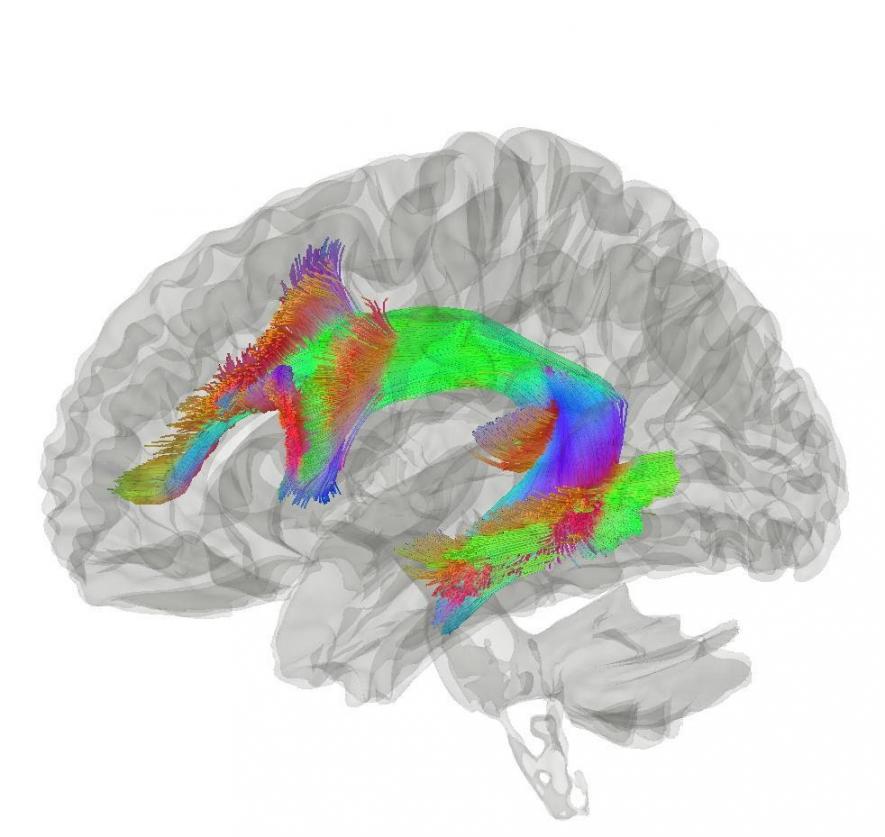How Old Is Origin of Language in Human Brain?

Image: Arcuate Fasciculus, Human Language Pathway. Image taken from Wikipedia
Language is a uniquely human trait. But in the evolutionary past of the brain, how long ago did language become a phenomenon? Unfortunately, mammal brains, like the bones and the teeth, don’t fossilise. In absence of any fossil of the brain, how old language has been in terms of its development remains an enigma for scientists.
To attempt to understand this enigma, one has to resort to what is available, like the brains of other animals today that closely resemble the long extinct ancestors of us. A Nature neuroscience paper published on April 20 undertook a similar approach and has found something remarkable: the origin of language in the brain is 20 million years older than what was thought earlier. This is a significant jump from the earlier of 5-million-year-old estimation.
In their research, the scientists analysed brain scans from open source platforms and also had their own scans conducted on humans, monkeys and apes. The human arcuate fasciculus pathway is crucial for language. This pathway interconnects posterior temporal regions and inferior frontal areas of the brain. What we mean by a neural pathway is a wide area in the brain connecting different regions. It is well known to us that different regions of the brain perform different tasks. In their analysis, they discovered that brain scans taken from macaques, chimps, and humans have their own version of the arcuate fasciculus pathway.
Now this brain pathway which is crucial for language capacity in humans had developed in our ancestors. This research says that the language pathway emerged which can be dated back to human’s last shared ancestor with the macaque monkeys. Humans shared last ancestry with macaque monkeys some 25 million years back. The earlier estimation of a 5-million-year-old language pathway of the brain was based on humans last shared ancestor with the chimps. The chimps also have a similar pathway in their brain as well.
But, the human language pathway stands a bit different from others. The left side of the pathway was stronger, while the right side involved the non-auditory part of the brain. This was not found to be true when it comes to the language pathway in monkeys and chimps.
Christopher Petkov, the corresponding author of the study quoted to have said, “Language can be spoken, written, or signed, but if some of these pathways are more or less intact, that might provide a venue for a more accurate prognosis of language recovery and new ideas on rehabilitation to improve language abilities.”
If his words are to be believed, we can assume that the study is important for people even today, in addition to the knowledge about a key part of human evolution. People who have their language ability affected due to stroke or brain degeneration can benefit as knowledge of this pathway might help in their treatment of regaining the language capacity.
Get the latest reports & analysis with people's perspective on Protests, movements & deep analytical videos, discussions of the current affairs in your Telegram app. Subscribe to NewsClick's Telegram channel & get Real-Time updates on stories, as they get published on our website.














